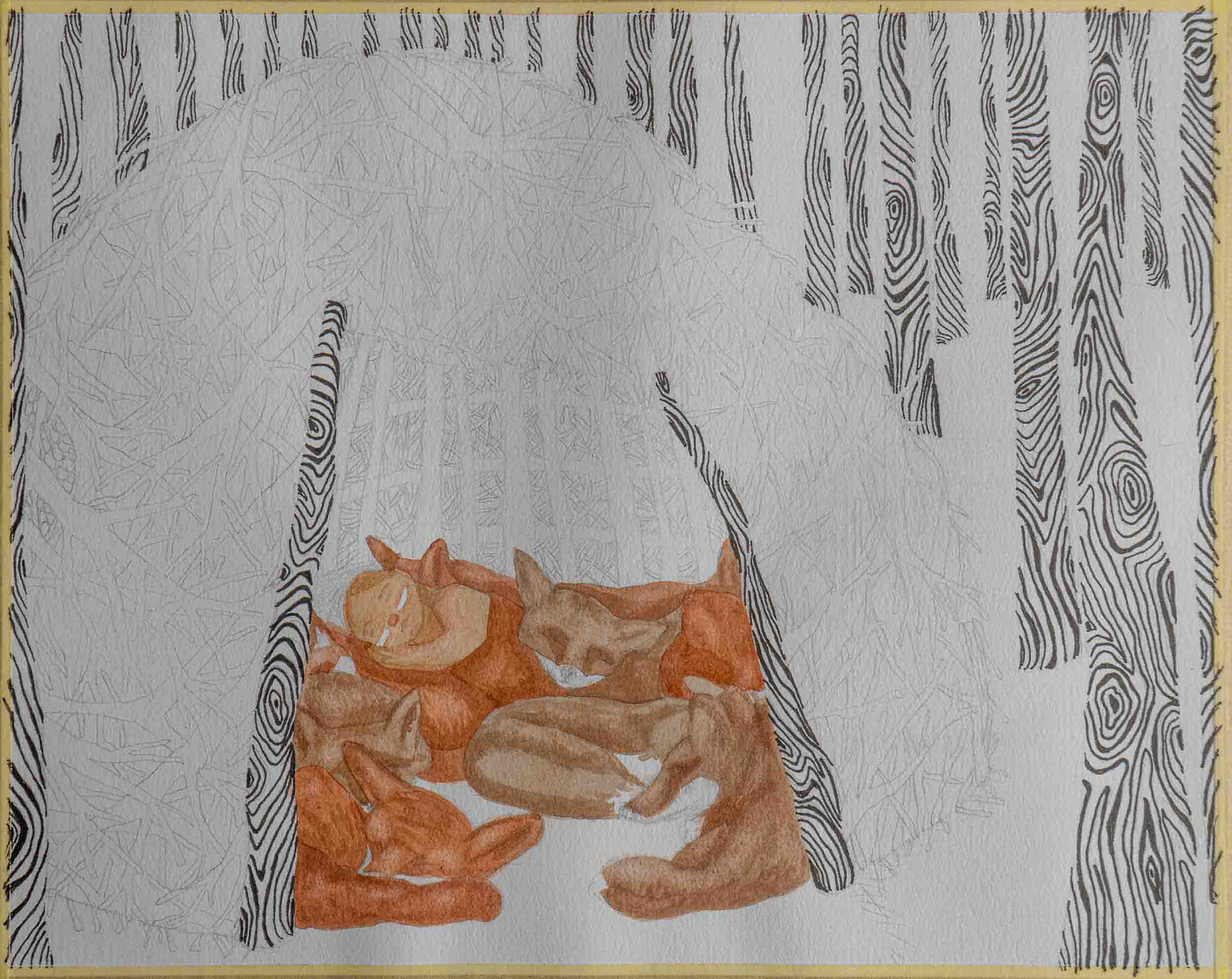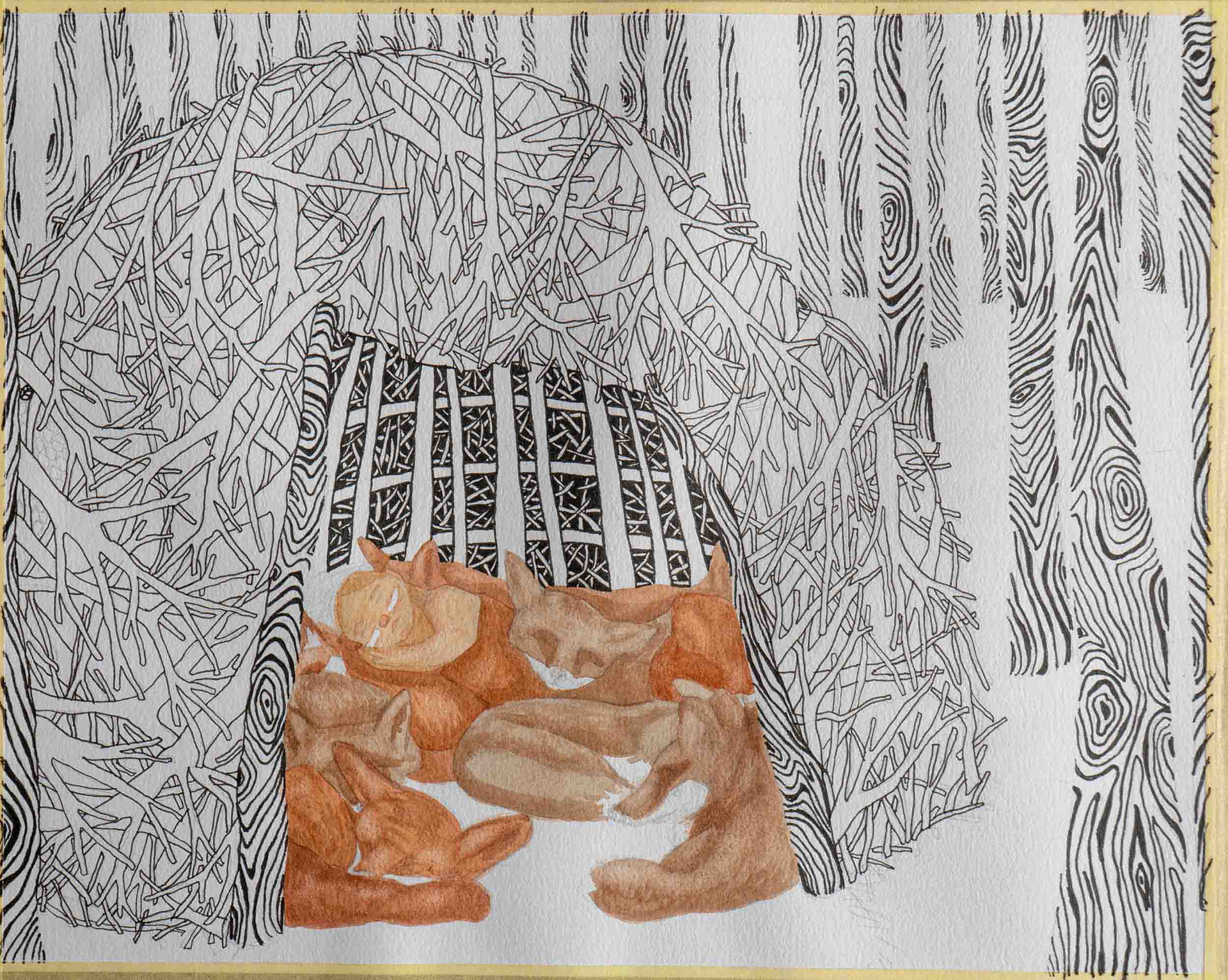Proyecto ilustración
Técnica tradicional
Medidas 20,3 x 25,4cm
Herramientas microfibra y acuarela
Contexto Ilustración libre inspirada en el desaparecido perro yagan de Tierra del Fuego
Fecha 01.2021
---
Project illustration
Technique traditional
Measures 20,3 x 25,4cm
Tools liner and watercolor
Context Free illustration inspired by the missing yagan dog from Tierra del Fuego
Date 01.2021












Proceso Process










Historia El perro yagán o perro fueguino, era un cánido que vivía entre los pueblos originarios yaganes y selknam del archipiélago de Tierra del Fuego. Fue domesticado del zorro colorado, en lugar del perro, que fue domesticado del lobo.
Quienes los llegaron a conocer, los describieron muy parecidos al zorro: con orejas y hocico puntiagudas y cola gruesa, pelaje largo y tamaño pequeño o mediano. También existían los cubiertos de pelaje enteramente blanco.
Según los relatos de los cuales se dispone, algunos concuerdan en que la utilidad del perro yagán para la caza y la defensa eran limitadas, tal vez producto de una domesticación parcial. Otros decían que defendían con ferocidad a sus dueños y que eran adiestrados desde pequeños para cazar y entregar sus presas. En general coinciden en que no eran agresivos, aún encontrándose en manada. La verdadera función de su compañía se le atribuye al abrigo que proporcionaban dentro de las chozas, donde se acurrucaban entre los humanos y mantenían la temperatura corporal.
Julio Popper, ingeniero rumano nacionalizado argentino y uno de los principales responsables del exterminio de los pueblos originarios que habitaron Tierra del Fuego, describe en una conferencia dada el 5 de marzo de 1887 en el Instituto Geográfico Argentino cómo raptó a un grupo de niños yaganes y los llevó contra su voluntad a una choza abandonada. En la choza, los niños se acurrucaron entre ellos y de a uno comenzaron a ingresar los perros yaganes para acompañarlos y darles calor, hasta que se quedaron dormidos.
La docilidad del perro yagán lo convirtió en presa fácil y se lo tildó de inútil al compararlo con los perros traídos por los colonos, que estaban adiestrados desde cachorros para la caza. El perro yagán fue exterminado por las mismas manos que se encargaron de los pueblos originarios de Tierra del Fuego.
History The Yagan dog, or Fuegian dog, was a canid that lived among the Yagan and Selknam indigenous peoples of the Tierra del Fuego archipelago. It was domesticated from the red fox, rather than the dog, which was domesticated from the wolf.
Those who got to know them described them as very similar to the fox: with pointed ears and snout and a thick tail, long fur and small or medium size. There were also those covered in entirely white fur.
According to the accounts available, some said that the Yagan dog's usefulness for hunting and defense was limited, perhaps the product of partial domestication. Others said that they fiercely defended their owners and that they were trained from a young age to hunt and deliver their prey. In general, they agree that they were not aggressive, even when found in a pack. The true function of their company is attributed to the shelter they provided inside the huts, where they huddled among humans and maintained body temperature.
Julio Popper, a Romanian engineer who became a nationalized Argentine and one of the main people responsible for the extermination of the native peoples who inhabited Tierra del Fuego, describes in a lecture given on March 5, 1887 at the Argentine Geographic Institute how he kidnapped a group of Yagan children and he took them against their will to an abandoned hut. In the hut, the children huddled together and one by one the Yagan dogs began to enter to accompany them and keep them warm until they fell asleep.
The docility of the Yagan dog made it easy prey and it was considered useless when compared to the dogs brought by the settlers, which were trained from puppies to hunt. The Yagan dog was exterminated by the same hands that were in charge of the native peoples of Tierra del Fuego.
Gracias por pasar Thanks for stopping by










